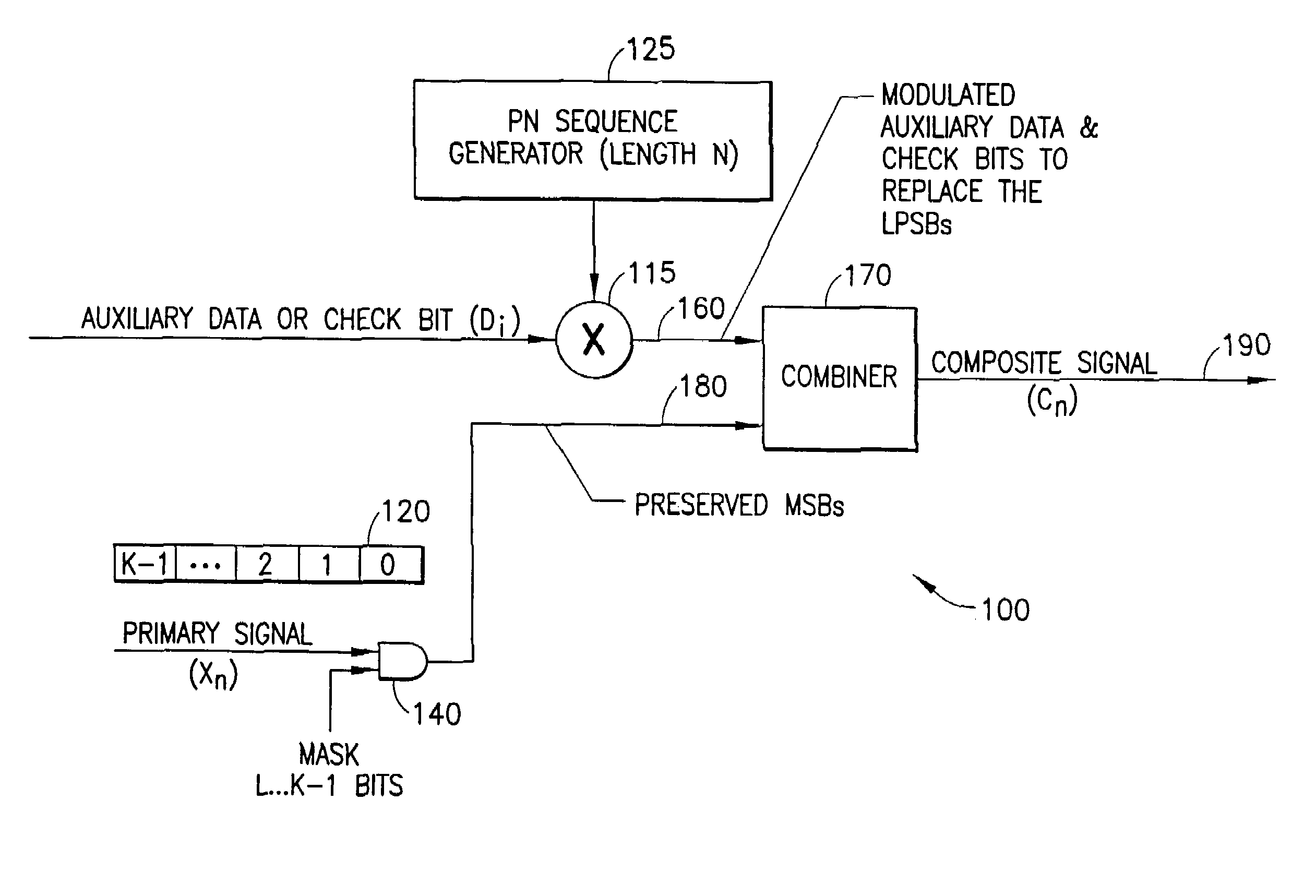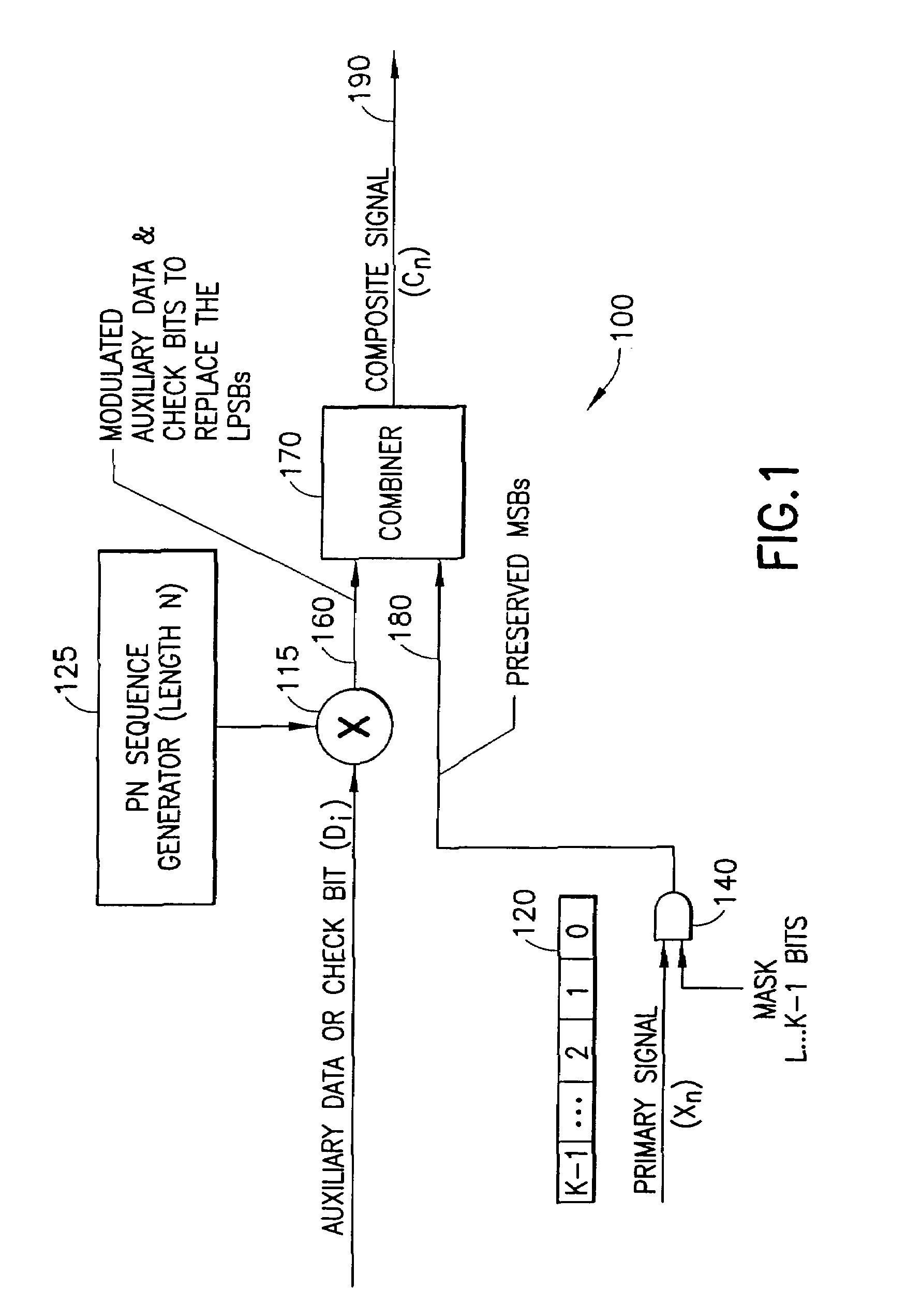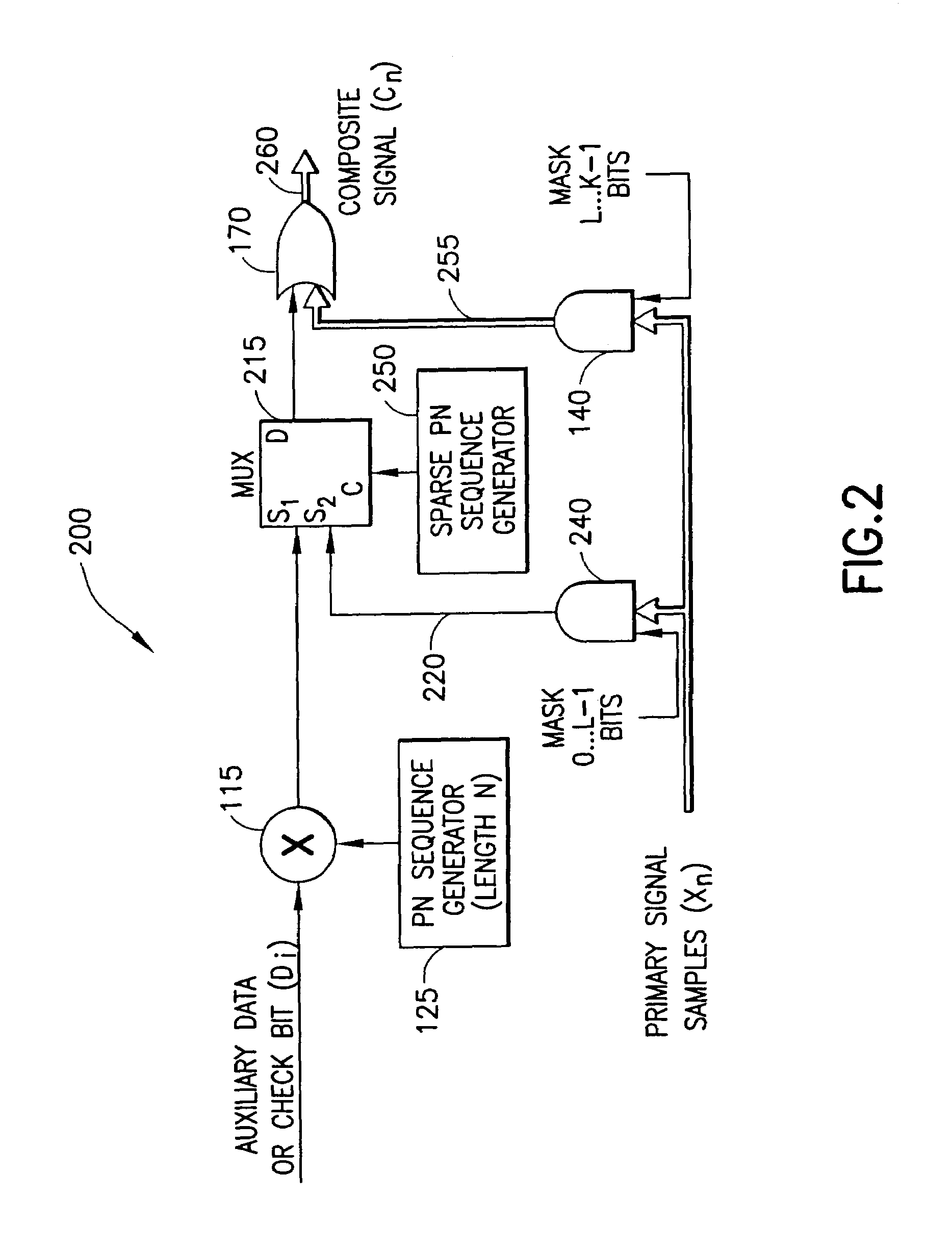Digital hidden data transport (DHDT)
a technology of hidden data and hidden data, applied in the field of digital hidden data transport, can solve the problems of objectionable noise introduced by indiscriminate manipulation of the least perceptual significance bits (lpsbs), and achieve the effect of reliably transporting hidden data, minimizing the manipulation of the lower order bits, and minimizing the manipulation of the lpsbs
- Summary
- Abstract
- Description
- Claims
- Application Information
AI Technical Summary
Benefits of technology
Problems solved by technology
Method used
Image
Examples
case 1
[0155]3) CTCA and CTCB are evaluated to determine the next steps. There are four possible cases:[0156] CTCA>0 and CTCB>0. The primary signal's LPSBs have the desired correlation with both PN1A′ and PN1B′—no further processing is needed for that frame. Skip to Step 6.[0157]Case 2: CTCA>0 and CTCB1A′ has the desired correlation with the primary signal's LPSBs, but PN1B′ does not. Set F (number of bits to complement)=|CTCB| / 2+1. Proceed to Step 4.[0158]Case 3: CTCAB>0. Similar to Case 2, PN1B′ has the desired correlation with the primary signal's LPSBs, but PN1A′ does not. Set F=|CTCA| / 2+1. Proceed to Step 4.
case 4
[0159] CTCA1A′, nor PN1B′ has the desired correlation with the primary signal's LPSBs. Set F=(Max(|CTCA|,|CTCB|)) / 2+1. Proceed to Step 4.[0160]4) Set PNSimilar=PN1A′^PN1B′. This bitwise exclusive OR operation will produce a sequence (PNSimilar) that has 1's where the bits in sequences PN1A′ and PN1B′ are different and 0's where the bits are alike.
[0161]5) At this point in the processing, one or more of the CTC values are negative, that is, one of the layers is negatively correlated with the primary signal's LPSBs (referred to simply as ‘LPSBs,’ hereafter). The goal now is to modify suitable locations in the LPSBs, in order to produce the desired CTC value for both Layer A and Layer B.
[0162]A suitable methodology is to modify LPSBs so that CTCA and CTCB are jointly increased. The elements in PNSimilar that are 0 provide suitable positions where LPSBs can be modified to jointly increase CTCA and CTCB. Recall that the elements of PNSimilar that are 0 correspond to the elements in PN1A′...
PUM
 Login to View More
Login to View More Abstract
Description
Claims
Application Information
 Login to View More
Login to View More - R&D
- Intellectual Property
- Life Sciences
- Materials
- Tech Scout
- Unparalleled Data Quality
- Higher Quality Content
- 60% Fewer Hallucinations
Browse by: Latest US Patents, China's latest patents, Technical Efficacy Thesaurus, Application Domain, Technology Topic, Popular Technical Reports.
© 2025 PatSnap. All rights reserved.Legal|Privacy policy|Modern Slavery Act Transparency Statement|Sitemap|About US| Contact US: help@patsnap.com



